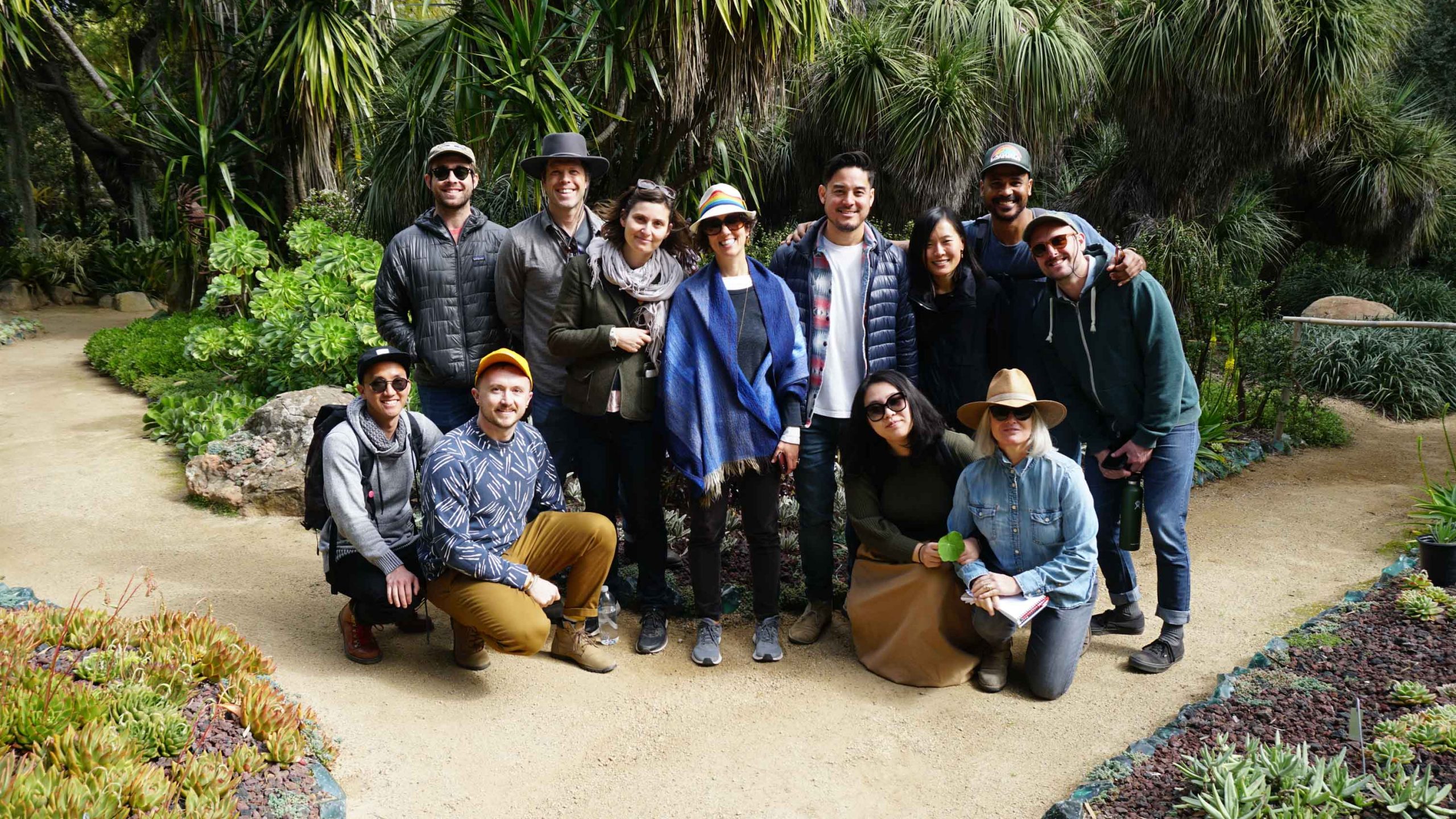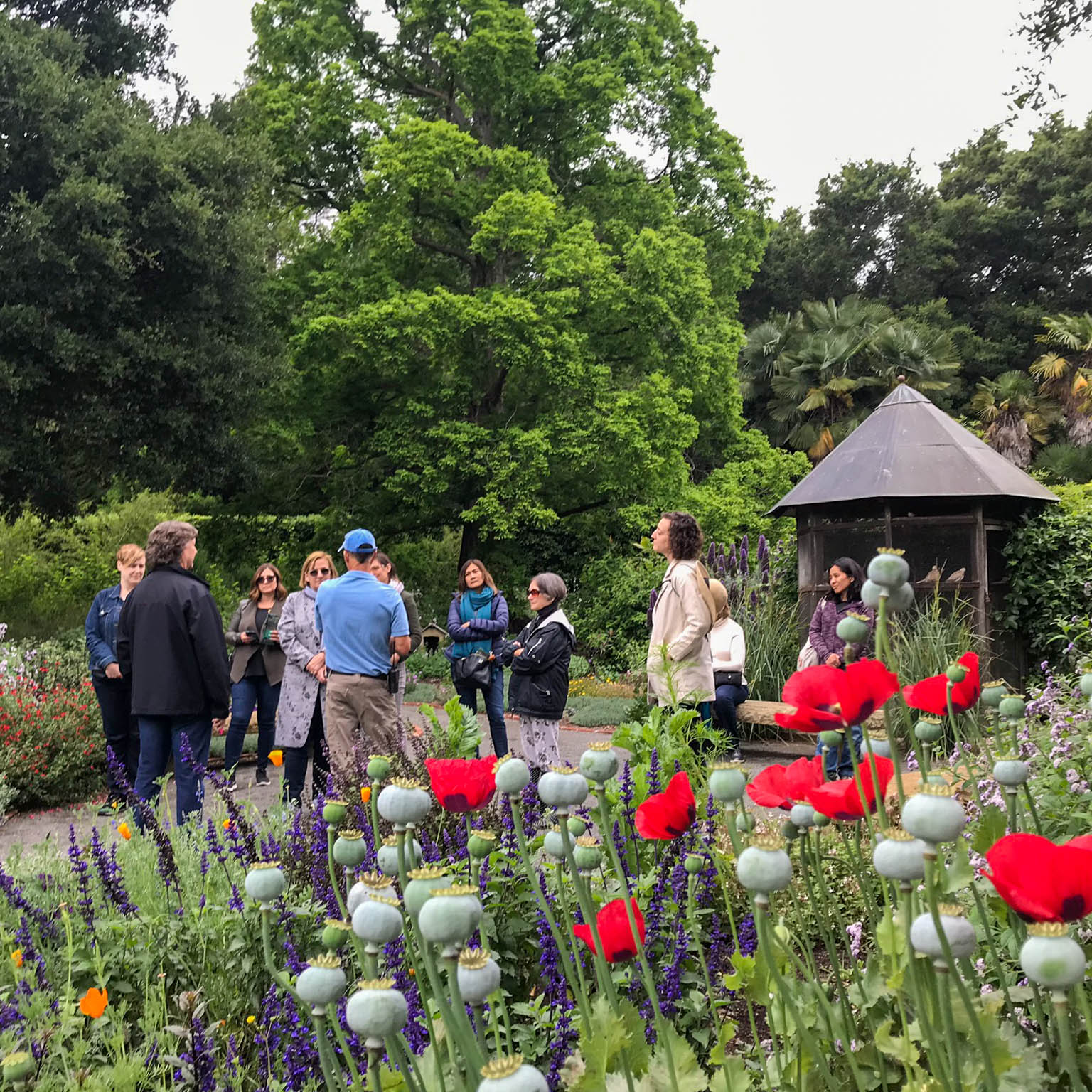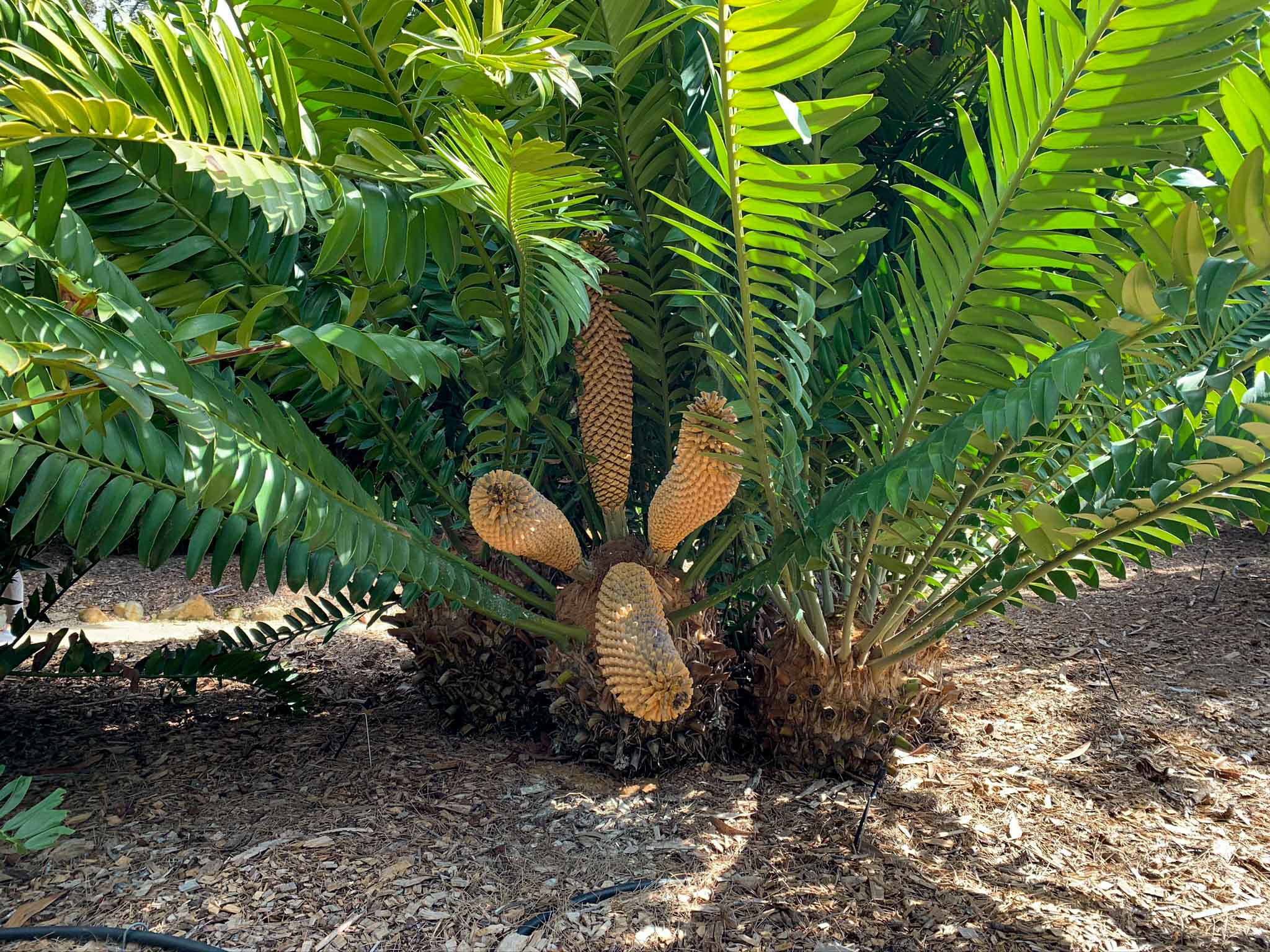As we develop new concepts for landscapes, gardens, and ecologies, we also think about sustainability and how maintenance teams will engage the site. Part of our learning experiences and inspirations are derived from visiting local botanical sites. In these visits, we find a wide range of new ideas and expert advice to bring into our forthcoming projects while reveling in the beauty around us.
Recently, our landscape team had the opportunity to visit the legendary Botanical Garden, Lotusland, and connect with the curator, Paul Mills, for a private tour. Lotusland Botanic Gardens, located in Montecito, California, is an immense 37-acre site packed with the most incredible species, with a remarkable horticultural experience around every bend. It is named Ganna Walska Lotusland for its owner and creator and is recognized as one of the world’s top ten gardens.

RIOS landscape team at Lotusland
Paul generously offered to host a behind-the-scenes tour of the gardens with our team. While open to the public, Lotusland is open by appointment only. As we walked the awe-inspiring site, we learned everything from technologies that provide insights on hidden underground root systems to creating assurance colonies to save plant communities. As we soaked up knowledge about the ways they maintain the sprawling and diverse site, we were thinking about all of the exciting ways we could influence our own projects.
Here are a few things we learned on our Lotusland visit:
There are 25 different gardens at Lotusland as well as 9 full-time gardeners, 1 grounds superintendent, and 1 plant healthcare specialist. Gardeners are dedicated to specific areas throughout the year and meet seasonally for specific projects. They are immersed in the horticultural practices of their respective gardens, including the seasonal pruning, fertilizing, and botanical ecology of their respective areas.
To maintain a garden of this scale, the “back-of-house” occupies a significant area on the property. There’s a wide range of equipment and tools, including a woodshop, paint shed, a metal and repair shop, an irrigation shed, several green houses, storage for hardscape materials, as well as soil, mulch, and compost. Every garden area has a hidden maintenance shed, where daily used tools are stored away.
Lotusland maintains its gardens with completely organic practices using ecologically sound treatments that respond to the ebb and flow of nature’s seasons. Some of the key treatments they focus on include making their own compost, insectariums (gardens grown to attract beneficial bugs), and knowledge of the cycle of both beneficial and invasive insects and pests.
On an advanced scale, they also brew their own Mycorrhizal tea, with oak leaf post from the garden to inoculate the garden through foliar sprays and injecting it into the irrigation system to enhance the oak woodland. This practice forms a symbiotic association between fungus and plant by colonizing the plant rhizosphere, its root system.


The underground fungal network in the soil works to break down organic matter so plants can absorb nutrients on a molecular level. Soil biologists have recently discovered this network is used by plants to share nutrients and to also warn each other of predation by insects or animals. As we turn to our own projects, we are ever mindful of soil as a vital element of the design.
LIDAR has long been used in geology and archaeology to find abnormalities underground. Decaying root systems of long felled trees harbor Ammillaria fungus. This harbors oak root fungus and causes the tree to prematurely die. The use of LIDAR has been proposed to pinpoint locations of these hidden underground root systems and strategically dig them up. Lotusland has plans to experiment with this technology to aid in eradicating old infected root systems.
As plant communities around the world become encroached upon by development, countless plant genetics are being lost. Lotusland is not only a beautiful botanical garden, it is also a research facility that harbors plants that have become lost to the continents where they once belonged.

The Encephalartos woodii is one of the rarest plants in the world.
An example of the rare Cycads in cultivation at Lotusland are the large specimens of Encephalartos woodii. According to Wikipedia, the “wood’s cycad is a rare cycad in the genus Encephalartos and is endemic to the oNgoye Forest of KwaZulu-Natal, South Africa. It is one of the rarest plants in the world, being extinct in the wild with all specimens being clones of the type.”
Through cultivation and breeding programs, Lotusland has been able to preserve and gift back populations of rare cycads to botanical gardens in South Africa where these populations have been lost due to poaching or urban encroachment. They also share the pollen from these cycads with other research gardens in efforts to continue lost or endangered genetic lines.


Before the rise of angiosperms (flowering plants), the earth was dominated by cone-bearing plants we call gymnosperms. Cycad fossil records date back 280-350 million years ago. They are gymnosperms that appear in the fossil record from the time of the dinosaurs, so they have affectionately been affixed the moniker “dinosaur food.”
Lotusland was a genuine seed of inspiration as well as a source of validation for some of our long-held curiosities. We can’t wait for a return trip one day, but in the meantime, their website offers some wonderful visual mementos of this botanical wonderland.
View the Lotusland Gallery.